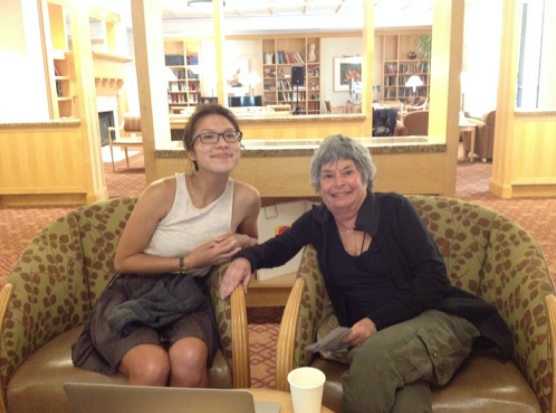
Recently, the Historypin team in San Francisco, and a memory care home in West Lafayette, Indiana, have run/will run pilots on using Historypin with seniors. Here is a short breakdown:
- Historypin in SF: As part of Historypin’s Bay Area Jewish project Sourdough & Rye, the San Francisco team helped carry out a community pilot at Rhoda Goldman Plaza, a senior care home in the city. Over two two-week rounds, we worked with a handful of seniors to help them think about their lives in terms of place, while behind-the-scenes thinking about the materials we would need to get these memories from the room to Historypin. Some important places we tried to highlight were childhood homes, a first school, where a resident was married, first job, etc.
- Using Historypin in an Indiana care home: At the end of September 2015, the Westminster Village care home, in West Lafayette, Indiana, will team up with the West Lafayette Public Library to help the care home residents contribute photos focused on Tippecanoe County (encompassing the WL area) or wherever they consider “home” prior to moving to Westminster. The WLPL will use these contributions as the basis for a “Westminster Collection” on Historypin, and the pilot will be treated as a gateway activity; residents who are interested in participating more fully with their personal history will receive assistance on establishing a separate Historypin Tour.
Some resources so far on procedure:
RG Plaza:
- Before our first iteration, we came up with a format that includes a binder or folder with a number of worksheets. This included a consent form and a brief bio form. There were also sheets that represent info from a pin on Historypin, where we could record a resident’s memories of particular places. During this first iteration, we recruited volunteers to help us record info in small groups. Not wanting to solely rely on the internet at RGP, most of this session was done mainly offline.
Rhoda Goldman session release form | Rhoda Goldman story collecting sheet
- After this first iteration, we came up with a format that includes a booklet that correspond to the Tour functionality on Historypin: a cover sheet which has a map and place for a participant photo, and pages which represent the info from a pin, including a map and place for an address, a place to clip a photo, date and other details. Along with this booklet we included a consent form.

- For the second iteration, we did an introductory presentation to residents, showing them an example of a completed Tour (and pins). We really underlined this time that we’re trying to “put life stories on the map,” which is about individuals on their own journey, but also about the communities they’ve been a part of in their life. Then we set up 90-minute slots to gather content and stories (had 2-3 people on our team working with individuals), during which we used a recorder and a laptop to explore places as residents remembered them. The idea was to think through the booklet we made, and try to pull out around 5 important places that could encompass “Mapping the Story of My Life.” We are continuing to put together Historypin Tours based on these second round of interviews, many of which built upon resident interviews during the first round.
Westminster: Though still in the process of prep, the overall plan is as follows:
- Resident Collection sheets will be distributed at the close of the introductory presentation, and also direct to resident mailboxes. The sheets will include general information about the photo(s) residents want to contribute, and a waiver for public use.
- Residents will be asked to bring their completed collection sheet with their photos to scanning workshop dates, where their information sheet with a signature and photo will be scanned (separately) and saved. During each workshop, the WLPL will provide one scanning station and WV will provide a second. WLPL will upload all scanned photos and content to Historypin.
- After the initial scan workshop WLPL will, based on interest, continue additional scanning workshops in conjunction with normal bi-weekly WLPL visits to Westminster.
- After the “Westminster Collection” is complete, WV will coordinate a program for residents to see the finished collection on Historypin.
————————–
All of the above briefly summarizes the thinking and set-up behind starting community memory pilots two senior care homes. Note that these are both still underway, but please field any questions you have here!